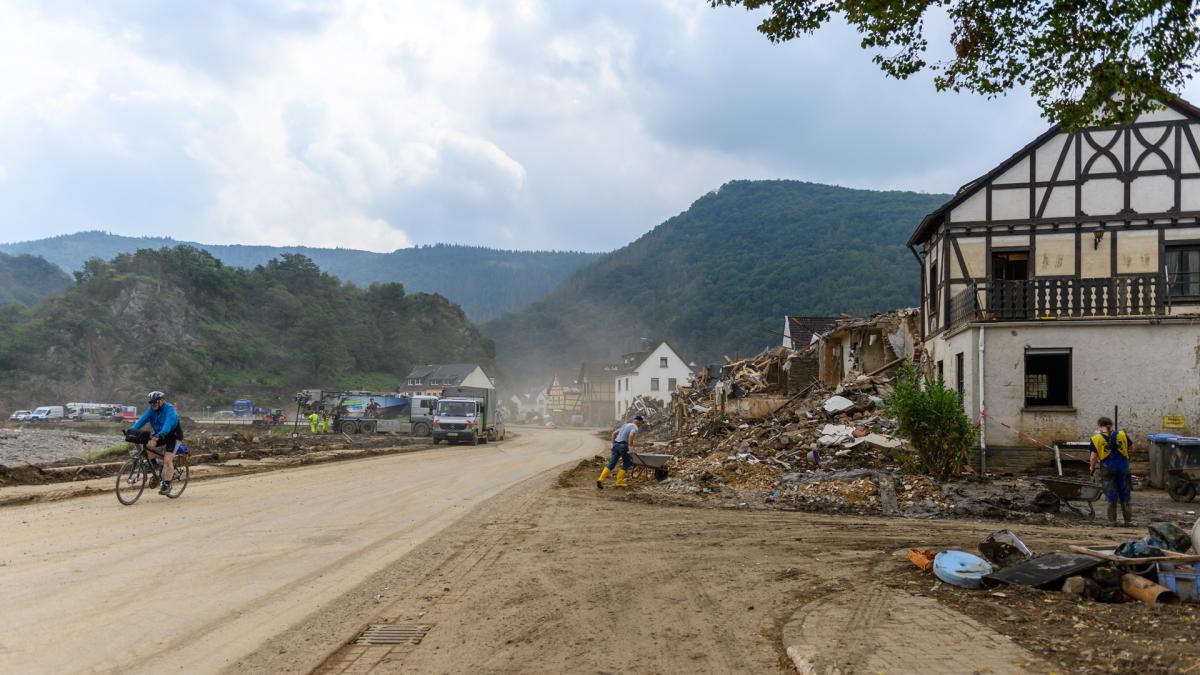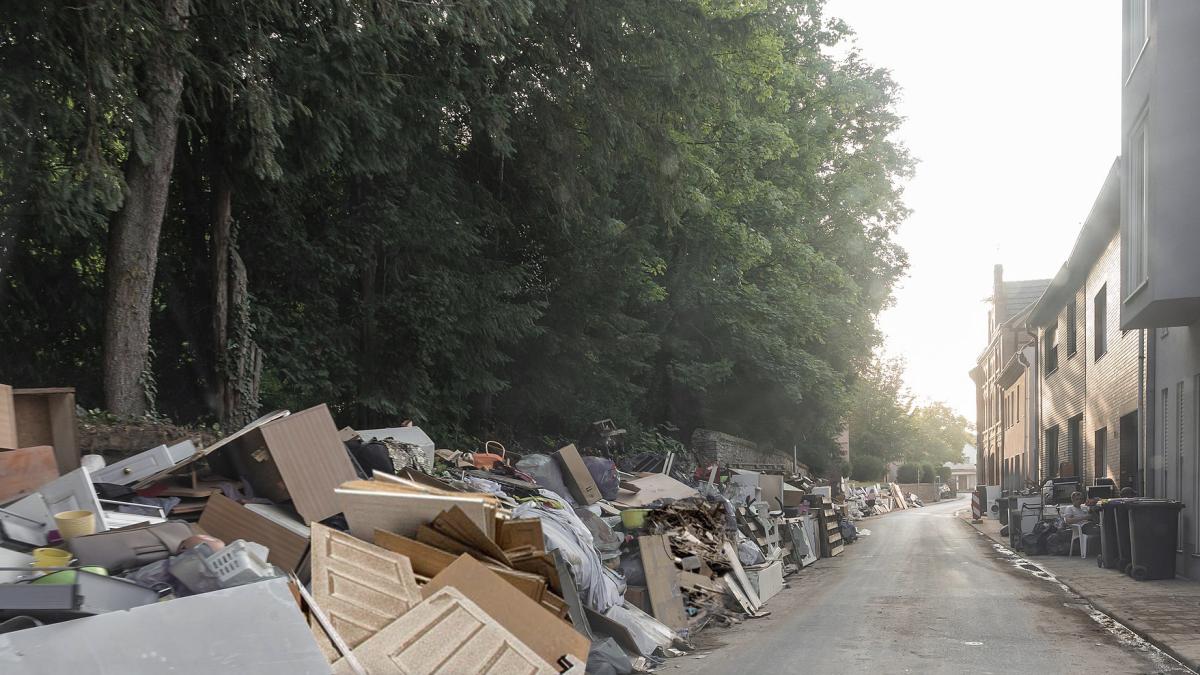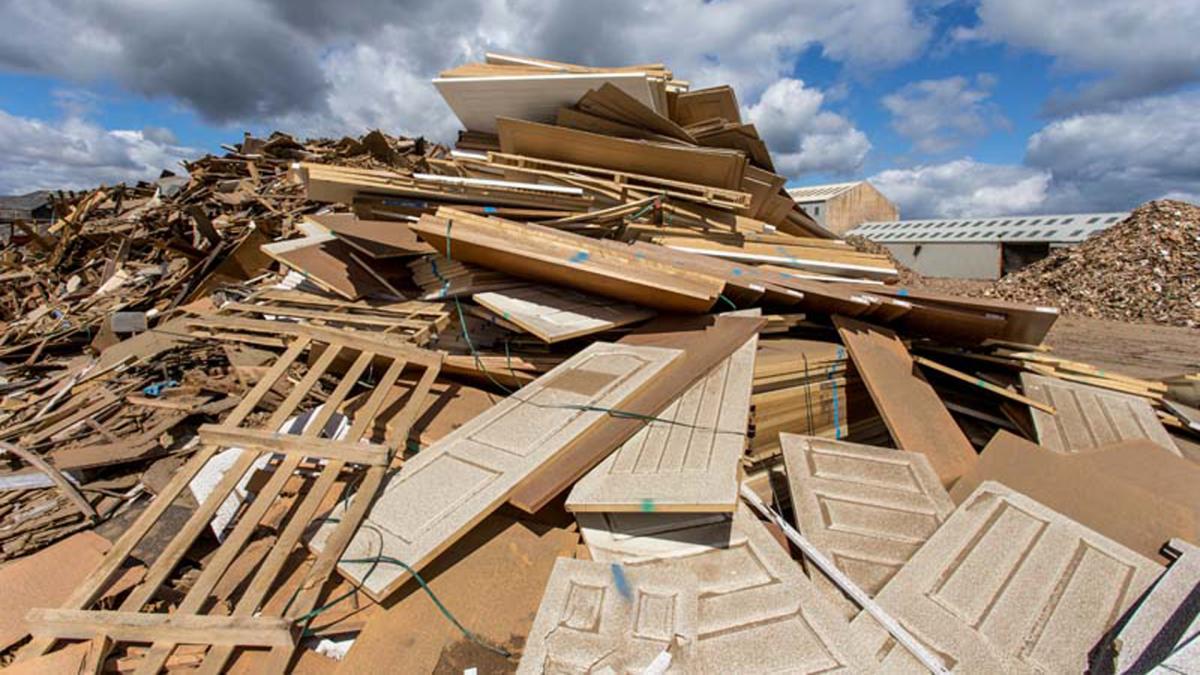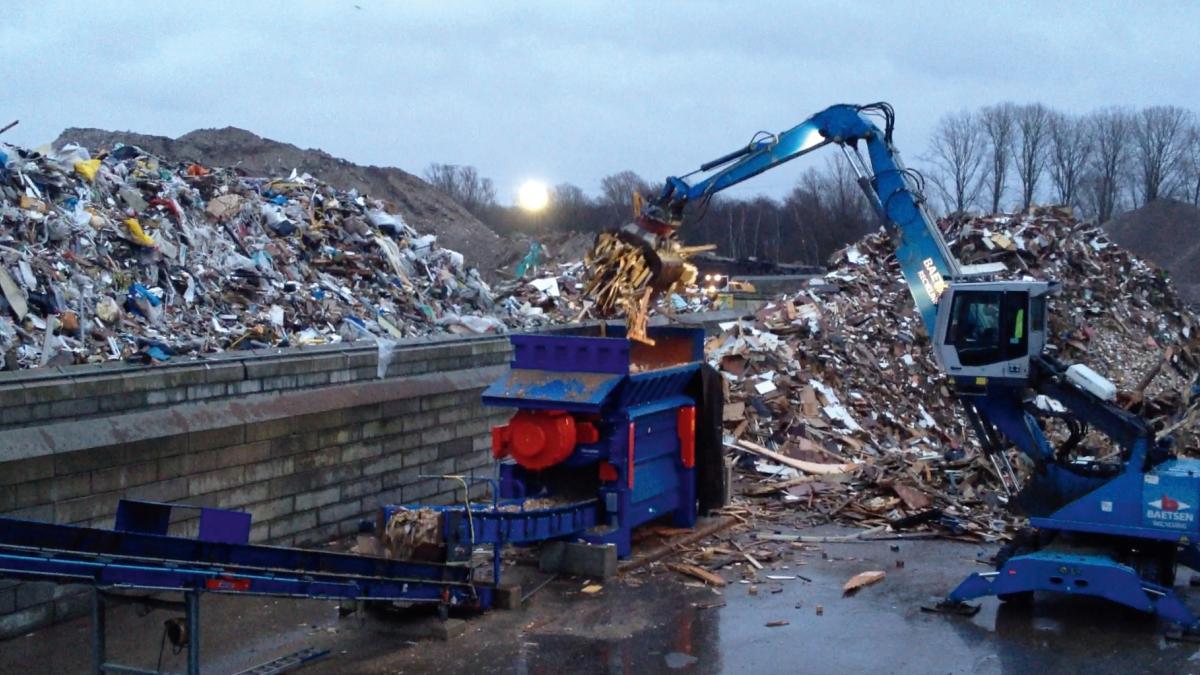The effects of climate change ensure that there is more and more waste wood, residual wood, bulky waste and dead wood to process. Stationary and mobile shredders play a key role in this.
But which shredder is better for the environment?
And which one costs less per tonne of output material?
It cannot be overlooked: The earth is coughing, wheezing and has a fever. The main cause is mankind with its CO2 emissions. And that has consequences: Extreme weather events such as droughts, storms, floods and hail are not only occurring more frequently, their effects are also becoming increasingly devastating.
Only one flood sequence
Waste wood processing in the Ahr valley
The flood disaster in the Ahr valley is a particularly tragic example: In June 2021, the masses of water not only destroyed numerous houses and claimed human lives, but also uprooted countless trees, resulting in thousands of tonnes of bulky waste and dead wood.
- By the end of December 2021, almost 300,000 tonnes of flood waste had been registered by the Abfallwirtschaft Landkreis Ahrweiler (AWB).
- Around 185,000 tonnes of bulky waste alone had been handed in to the Niederzissen Waste Management Centre (AWZ), located in the Ahr valley, by mid-October 2021.
- Specialised companies were in action for weeks to process 2,500 tonnes of bulky waste and up to 500 tonnes of wood per day, thereby recovering a valuable secondary raw material.
Why shredders will play a key role in the future
Extreme weather events will become more frequent
Overall, climate experts assume that average temperatures will continue to rise and extreme weather events will increase. Floods caused by heavy rainfall, such as those in the Ahr valley, storms and droughts are predicted for Central Europe. As a result, there will be more and more waste wood, dead wood and bulky waste that can be shredded and processed for material or thermal use.
Shredders play a key role in this: in the waste and recycling industry they are used both mobile and stationary to recover an important secondary raw material. This is because the chipboard produced in Germany contains 30 % recyclable wood, which is made available through the circular economy. By burning these high-calorific wood fractions, biomass cogeneration plants can not only generate environmentally friendly electricity without producing additional greenhouse gases, but also heat.
Less cost per tonne of output material?
The great challenge of waste wood processing is to fully exploit the potential of material and energy recycling while acting sustainably yourself. And this requires shredders that deliver the highest possible qualities and throughputs with low energy consumption, operating costs and maintenance requirements. Or to put it another way: shredders that cost less per tonne of output material.
So when comparing whether mobile or stationary shredders have the advantage, the following questions arise: Which shredder performs better when considering the output-cost ratio while maintaining good quality? Which is more efficient in view of rising energy prices and new legislation on CO2 emissions? And what about the environmental impact when it is more important than ever to reduce harmful climate impacts?
Three reasons why stationary shredders are more efficient
1 | Low-emission drive
Stationary shredders use energy-efficient electric motors with the option of
feeding them with electricity from renewable energy sources.
Mobile shredders, on the other hand, need diesel for both operation and
transport which is not only becoming increasingly unecological, but also
increasingly uneconomical. In single-shift operation, diesel-powered
shredders cause CO2 pollution of the environment from the combustion
of more than 40,000 litres of diesel per year, which is the reason why a
CO2-neutral operation is not possible.
It should also be borne in mind that the state earns money for every litre of diesel
diesel consumed. Emissions such as noise and NOX are also diesel-powered
machines are often underestimated.
2 | Higher energy efficiency
Electrically powered shredders achieve significantly higher energy efficiency, which has a positive effect on the operating result. Keyword efficiency: purely hypothetically, with diesel 200 kWh nominal, net only 130 kWh, and with an electric motor 220 kWh nominal and 190 kWh net.
3 | Lower costs
Due to the higher efficiency, the at least up to 30 % of the energy costs for a comparable throughput. Added to this are maintenance costs, which are significantly lower with the electric motor. Maintenance costs are lower
with the electric motor.
Stationary shredders for sustainable processing success
When the focus is on the energy benefit, the efficient shredding and further material processing of the source materials are essential keys to the success of the processing.
And whether you choose a stationary or mobile shredder for waste wood processing - what is the individually better solution ultimately depends on your own requirements.
At any rate, we at Vecoplan are convinced that stationary shredders are superior to mobile shredders in terms of energy and cost efficiency when all parameters are taken into account. That is why we have clearly positioned ourselves in favour of stationary shredders.
Are you about to make the decision to invest in a stationary shredder? Contact us and get competent advice: +49 2661 62 67 138
Get non-binding advice now
Fill out our contact form in just a few clicks and receive your personal consultation. Our promise: Your consultation is always honest, individual and above all free of charge. If you provide your telephone number, we will be happy to get in touch with you by phone.








